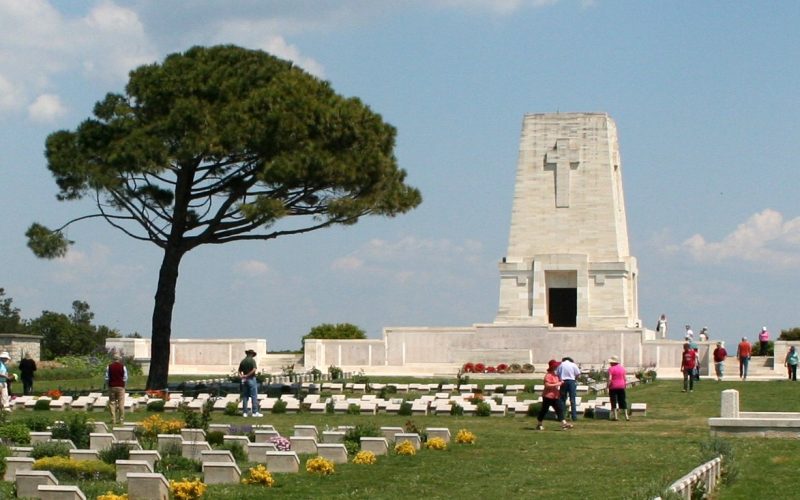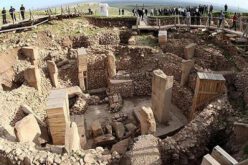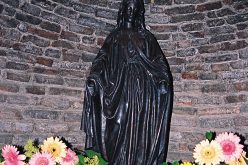Gallipoli

Gallipoli
Anzac Day is celebrated on 25 April each year, regardless of on which day it falls. The day is a public holiday, however no replacement holiday is given if Anzac Day falls on a weekend (except in Western Australia).
It was on 25 April 1915 that the armies of Australia and New Zealand entered into their premier battle of the First World War, at Gallipoli, Turkey. At the time, Australia had only been recognised as a federal commonwealth for thirteen years.
Many Australians were sympathetic to the United Kingdom, which they regarded as the motherland. So the volunteer armies of Australian and New Zealand, eager to fight the good fight in the war, bravely landed on the shore of the Gallipoli Peninsula with the intent to capture and secure a safe passage for Allied navies.
At Gallipoli, the Anzac’s faced off with one of the fiercest armies history has ever known. Despite landing under the cover of darkness, the Anzac’s were met with immediate bombardment and gunfire. On the shores of Gallipoli, the Australian and New Zealand armies fought for eight months forcing a stalemate. Eight thousand Anzac soldiers lost their lives before the Allies called for an evacuation.
While the operation itself was not a success, the valour and determination shown by Anzac’s the “Knights of Gallipoli,” were immediately commemorated in Australia, London, and even at the Allies’ camp in Egypt in 1916. Parades and ceremonies were held in their honour, and even those who were wounded in combat were a part of the parade while they were still recovering.
By the 1920s, the day had become a way to memorialise the sixty thousand Australian soldiers who died in the First World War. By the next decade, all Australian states had a form of celebration for Anzac Day, and many of the traditions we still carry out today had already taken shape. Forevermore, the 25th of April would be known as the day Australia arrived as a force in the world.
Anzac Day’s Commemorations
Dawn Service The Dawn Service is one of the most revered and popular ceremonies that takes place on Anzac Day. The Dawn Service is thought to have originated in the military routine known as the “stand-to.” Opposing armies often attacked in the partial light of dusk and dawn. Ever vigilant, the Australian military made it a practice to wake the soldiers and prepare them at their posts with weapons before the other armies could strike. The stand-to technique is still used by the Australian military to this day. The Dawn Service seeks to recapture those quiet moments in the near-darkness, when soldiers had an opportunity to bond and reflect. While the first Dawn Services were vigils performed only by veterans in complete silence, all Australians are encouraged to participate. Today, some services feature readings, hymns, and riffle volleys.
The Last Post Often heard at the Dawn Service and other memorials on Anzac Day, The Last Post is the tune that is played over a bugle to signify the end of the day, or the final post. The soldiers could then take their rest. At memorial services, this melody is played to suggest the last post as a metaphor. The soldiers who are being honoured can hear the tune and know that all duties have been completed, so he or she may finally rest in peace.
Memorials, Marches and Exhibits Throughout the day, many towns host marches that feature veterans and members of The Returned & Services League. Thousands of people gather to give their thanks and respect along the parade routes. Memorial readings where well known poems such as “For the Fallen” and “In Flanders Fields,” help the community to honour and remember those who have served in the military, and better experience what they went through. Haunting verse such as, “Take up our quarrel with the foe: / To you from failing hands we throw / The torch; be yours to hold it high. / If ye break faith with us who die,” cause those in attendance to take a moment and really consider what roles our soldiers play in the greater context of Anzac Day. War memorials and museums also host exhibits on Australia’s military history to deepen our understanding.
Red Poppies The lines that follow in Canadian Colonel John McCrae’s poem, “In Flanders Field,” mention, “We shall not sleep, though poppies grow / In Flanders fields.” Red poppies were the first flowers to bloom on the battlefields of Northern France and Belgium despite the bloodshed in the First World War. It was a popular tale among soldiers that the flowers gained their bright red hue from the blood of the fallen that had soaked into the ground. These red flowers are placed on war memorials as a symbol of remembrance, and perhaps a reminder that out of sacrifice, new hope emerges.
Anzac Day Football Although football had been played on Anzac Day for a number of years, the match between Collingwood and Essendon did not become a standard recurrence until 1995. When Collingwood and Essendon first squared off against each other, it was not uncommon for AFL matches to occur on Anzac Day, as donations from the day went to benefit the RSL. However, after that first match between the classic rivals, it became clear that this annual match was a special way to pay tribute to the values of Anzac Day; while deployed across the globe, football played by Anzac soldiers as a way to sharpen their skills, keep up good humour, and forge better connections with one another. That same vein of spirit, courage, mate ship, and fairness runs throughout the day, at the end of the annual match, the Anzac medal is awarded to the player who best demonstrates these highly valued Australian qualities.
Catafalque parties A catafalque is a raised structure that holds a coffin. At a funeral as a sign of respect, four soldiers would stand about a meter away from the catafalque, facing in four different directions, with their heads lowered and weapons held at reverse. Mourners would pass by to say farewell to the departed. On Anzac Day, you may see soldiers standing in such a position again as a sign of tribute.
Anzac Biscuits These treats had a very practical beginning. During the First World War, the friends and families of soldiers would send care packages overseas. Since any food they could send had to be resistant to spoilage and full of nutrition, a biscuit made from rolled oats, sugar, flour, coconut, butter, and a few other ingredients became a popular pastry to pack in boxes. To this day, Anzac biscuits are one of the few products approved to bear the Anzac acronym, which is protected by Federal legislation.
Related Articles
Write a Comment
Only registered users can comment.












